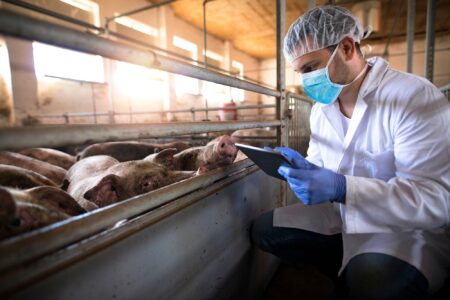Proper tire inflation is one of the simplest and cheapest ways to create a noticeable impact on your farm’s fuel consumption.
“You can actually save a lot of money by getting the right air pressure, because you’ll have the optimum footprint,” said Dusty Hininger, Firestone Ag field sales trainer. “Realistically, sometimes it’s up to 4% savings, maybe even more, depending on how far away your air pressures are.”
Hininger said the biggest issue is that most farmers don’t know what their equipment actually weighs. After getting an accurate measurement, knowing how much to inflate your tires is simple.
Firestone field sales managers carry scales with them, but many local co-ops will allow you to use their scales as well.
“The best way to weigh your tractor is to ballast it, and you might need to move some weights around to get it to ballast correctly,” Hininger said. “It also depends on if you’re a using three-point or tongue draw; it will need to be ballasted differently.”
Fill your tractor with fuel before determining your weight. Weighing your tractor with the biggest piece of equipment you plan to pull is also important.
Once you have determined your weight, it’s just a matter of looking up the correct tire pressure for your machine and your tires for the optimum footprint. Hininger recommends checking weekly for the best results and greatest savings.
“I know that’s 52 times a year, but do you actually use that tractor every week? If I can show you a 4% savings, or even a 2% savings, is it worth your time to check it 15 or 20 times a year?” he asked.
If you don’t have time to check weekly, Hiningere recommends taking the minimum pressure and adding four PSI as a basic rule of thumb. Tire pressure should be checked first thing in the morning for the most accurate reading.
Hininger also recommended buying a quality air gauge to check your tire pressures.
“Buy the $19.99 one, not the $9.99 one,” he said. “And then check it once a month on a new pickup or vehicle that has an automatic tire monitoring system, because all air gauges go bad eventually.”
Other Benefits to Proper Inflation
Besides saving on fuel consumption, properly inflated tires also mean a smoother ride and reduced soil compaction. Tires will also last longer when inflated correctly.
“I guarantee there’s not one farmer who’s bought a tire in the last couple of years who thinks they didn’t pay enough,” Hininger said. “Having the optimum footprint makes tires last longer and you’ll get more hours out of your tractor tires.”
If your tractor is equipped with new VF tire technology, Hininger reminded farmers to return the inflation to standard when traveling on the road.
“In the field you want the biggest footprint you can get, but on the highway or hard dirt you have something called rolling resistance, and that burns more fuel,” he said. “If you have VF technology and an inflation system, use it in the field but return it to the standard setting when you’re on the road, then you’ll be saving fuel all the time.”
For tractors without inflation systems, using an average PSI between field and road optimums is your best option, according to Hininger.


:max_bytes(150000):strip_icc()/soybeans-Candlestick-up-2-15249dff548e4a3ba6637f1b95db5030.jpeg)

:max_bytes(150000):strip_icc()/28533ripesoybeans_soybeans-01d6026d90324818a2c9daf57e26b0cd.jpg)


:max_bytes(150000):strip_icc()/FirestoneAg1-86a2f1933be442cd8caa005b9fb60a93.jpg)
:max_bytes(150000):strip_icc()/IMG_8939-2048x1365-2b05f3d0c3304147987c834836b0b456.jpg)
:max_bytes(150000):strip_icc()/FarmerInstallingBinTalkPro-289eaafc21c345c8b62150b5bc2d35f7.jpg)
:max_bytes(150000):strip_icc()/Bloomberg20Creative-1257164002-2-2000-7f9144c2cb974a33a939e10664d1bff7.jpg)
